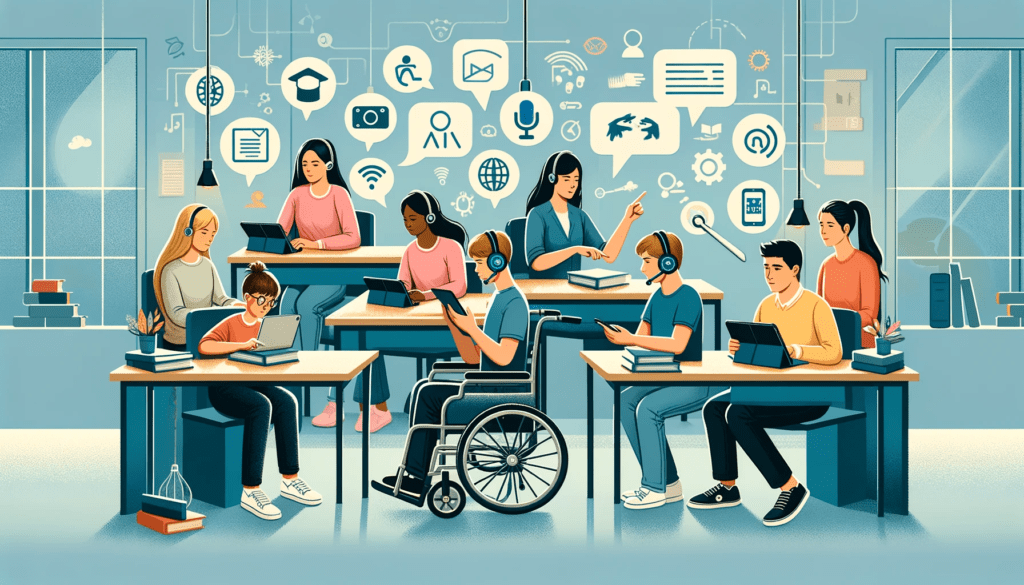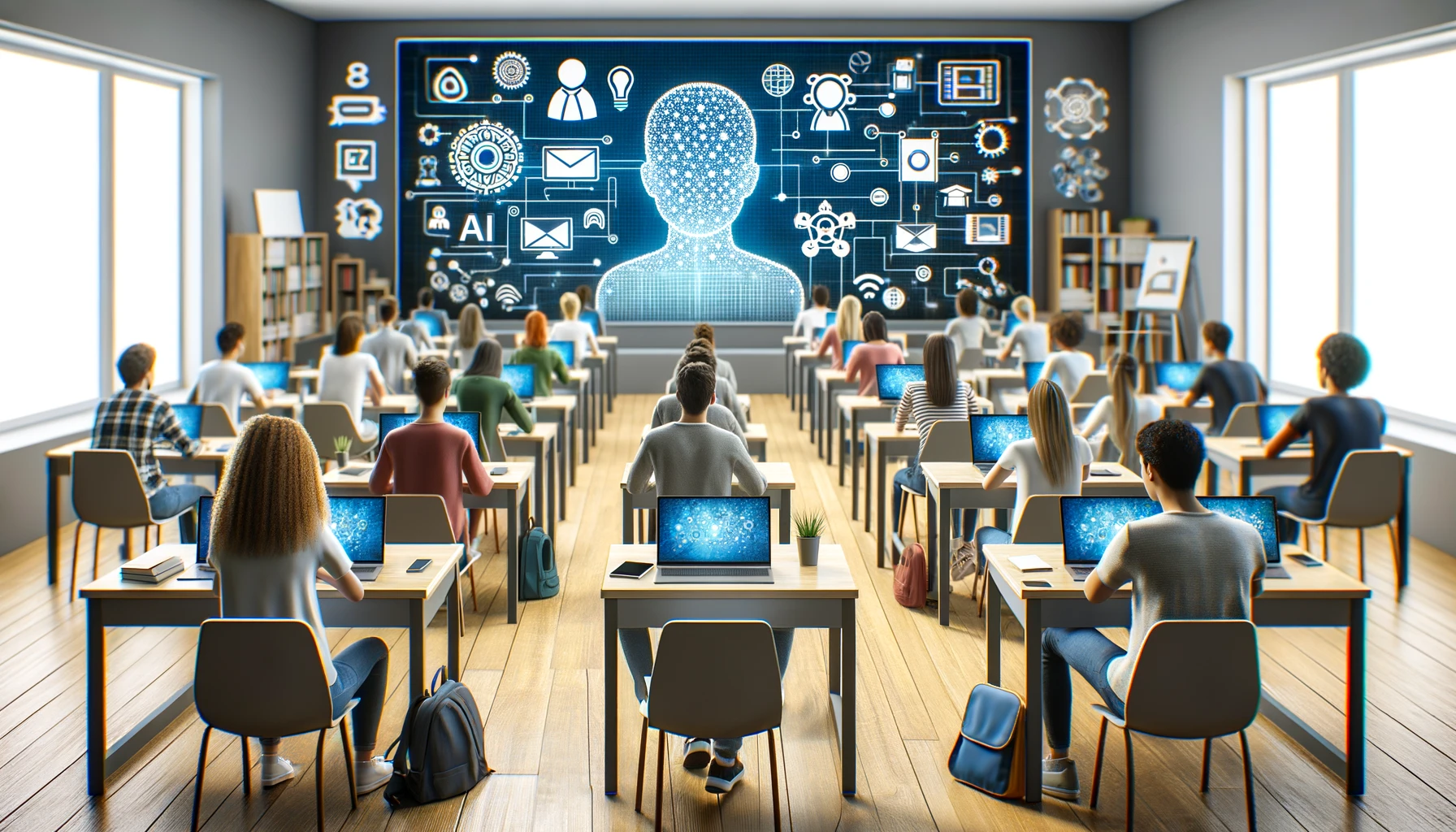Introduction
Artificial Intelligence (AI) has rapidly become a transformative force across various industries, and education is no exception. As the world increasingly embraces digital solutions, distance learning has emerged as a viable and sometimes necessary alternative to traditional classroom settings. This shift has been accelerated by global events like the COVID-19 pandemic, which highlighted the importance of flexible and accessible education.
In this article, we will explore how AI is revolutionizing distance education by enhancing learning experiences, personalizing educational content, and overcoming traditional barriers. From machine learning algorithms that predict student performance to AI-powered tools that offer tailored feedback, the integration of AI in education promises a future where learning is more efficient, inclusive, and engaging. We will also discuss the benefits, challenges, and ethical considerations surrounding AI in distance learning, providing a comprehensive overview of its current and future impact on education.
Section 1: The Rise of Distance Learning
1.1 Historical Context
Distance learning has evolved significantly over the years. Initially, it began as correspondence courses in the 19th century, allowing students to receive lessons and submit assignments via mail. The advent of the internet in the late 20th century marked a new era for distance education, enabling real-time communication and access to vast online resources. The development of Massive Open Online Courses (MOOCs) further democratized education, offering free or affordable courses to anyone with an internet connection.
1.2 Current Trends
Today, distance learning is more prevalent than ever. According to UNESCO, the COVID-19 pandemic forced over 1.5 billion students worldwide to adapt to remote learning, highlighting the need for robust and scalable online education systems (IntechOpen – Open Science Open Minds). Educational institutions and tech companies have responded by developing sophisticated e-learning platforms that leverage AI to enhance the learning experience. These platforms offer features like personalized learning paths, interactive simulations, and real-time feedback, making education more engaging and effective.
Section 2: AI Technologies in Distance Education
2.1 Machine Learning and Predictive Analytics

Machine learning algorithms play a crucial role in personalizing the learning experience. By analyzing vast amounts of data, these algorithms can predict student performance, identify learning gaps, and suggest tailored educational content. For instance, platforms like Coursera and Khan Academy use machine learning to recommend courses and resources based on individual learning patterns and preferences (UNESCO).
2.2 Natural Language Processing (NLP)
Natural Language Processing (NLP) is another AI technology making waves in education. NLP enables the development of intelligent tutoring systems that can understand and respond to student queries in real time. These systems provide instant feedback, helping students grasp complex concepts more quickly. Additionally, NLP is used in automated grading systems, which can assess written assignments and provide constructive feedback, saving educators time and ensuring consistency in evaluation (ERIC).
2.3 AI-Powered Educational Tools
AI-powered educational tools are revolutionizing how students learn. Tools like adaptive learning platforms adjust the difficulty of content based on student performance, ensuring that learners are neither bored nor overwhelmed. Virtual labs and simulations provide hands-on experience in a safe and controlled environment, while AI-driven chatbots offer round-the-clock support, answering questions and guiding students through their learning journey (MDPI).
Section 3: Benefits of AI in Distance Learning
3.1 Personalized Learning
One of the most significant advantages of AI in education is its ability to provide personalized learning experiences. By tailoring content to individual needs and learning styles, AI enhances student engagement and improves learning outcomes. Studies have shown that personalized learning can lead to higher retention rates and better academic performance (UNESCO) (MDPI).
3.2 Accessibility and Inclusivity

AI makes education more accessible to diverse learners. Speech recognition and text-to-speech technologies help students with disabilities, while language translation tools break down language barriers, enabling non-native speakers to access quality education. AI also supports inclusive education by providing resources tailored to the needs of students from various backgrounds and learning abilities (IntechOpen – Open Science Open Minds).
3.3 Efficiency and Resource Management
AI streamlines administrative tasks, allowing educators to focus more on teaching. Automated systems handle tasks like scheduling, grading, and reporting, reducing the workload on teachers and administrative staff. Additionally, AI helps optimize resource allocation, ensuring that educational institutions can deliver high-quality education cost-effectively (UNESCO).
Section 4: Challenges and Limitations
4.1 Technological Barriers
Despite its benefits, AI in education faces several challenges. Technological barriers, such as lack of infrastructure and limited access to high-speed internet, hinder the widespread adoption of AI-powered distance learning. The digital divide remains a significant issue, particularly in developing countries (MDPI).
4.2 Ethical and Privacy Concerns
The use of AI in education raises ethical and privacy concerns. Collecting and analyzing vast amounts of student data can lead to privacy breaches if not managed properly. There are also concerns about algorithmic bias and the transparency of AI decision-making processes. Addressing these issues is crucial to ensure that AI is used ethically and responsibly in education (ERIC).
4.3 Resistance to Change
Resistance to change is another challenge. Educators and institutions may be hesitant to adopt AI technologies due to lack of familiarity or fear of job displacement. Effective training and support are essential to help educators integrate AI into their teaching practices and to highlight the value it can add to the educational experience (IntechOpen – Open Science Open Minds).
Section 5: Future Prospects of AI in Distance Education
5.1 Emerging Technologies
Emerging technologies like virtual and augmented reality (VR/AR) are set to further enhance distance learning. These technologies offer immersive learning experiences, allowing students to interact with 3D models and virtual environments. Combined with AI, VR/AR can create highly engaging and effective educational tools (UNESCO).
5.2 Policy and Governance
Government policies play a crucial role in shaping the future of AI in education. Policymakers must develop frameworks that ensure the ethical use of AI and promote equal access to educational resources. International collaboration and standard-setting are also essential to address global challenges and opportunities in AI-driven education (ERIC).
5.3 Long-Term Vision
The long-term vision for AI in education is one of continuous improvement and innovation. As AI technologies advance, they will enable more personalized, efficient, and inclusive learning experiences. The potential of AI to redefine traditional education paradigms is immense, promising a future where learning is tailored to the unique needs and goals of each student (MDPI).
Conclusion
In conclusion, AI is poised to transform distance education, offering numerous benefits such as personalized learning, increased accessibility, and improved efficiency. However, challenges like technological barriers, ethical concerns, and resistance to change must be addressed to fully realize the potential of AI in education. As we look to the future, it is essential to develop policies and frameworks that support the ethical and inclusive use of AI, ensuring that all learners can benefit from these advancements.
The integration of AI in distance learning is not just a trend but a fundamental shift in how education is delivered and experienced. By embracing these technologies, we can create a more flexible, engaging, and effective learning environment that meets the needs of diverse learners around the world. As educators, students, and policymakers navigate this evolving landscape, staying informed and adaptable will be key to harnessing the full potential of AI in education.
